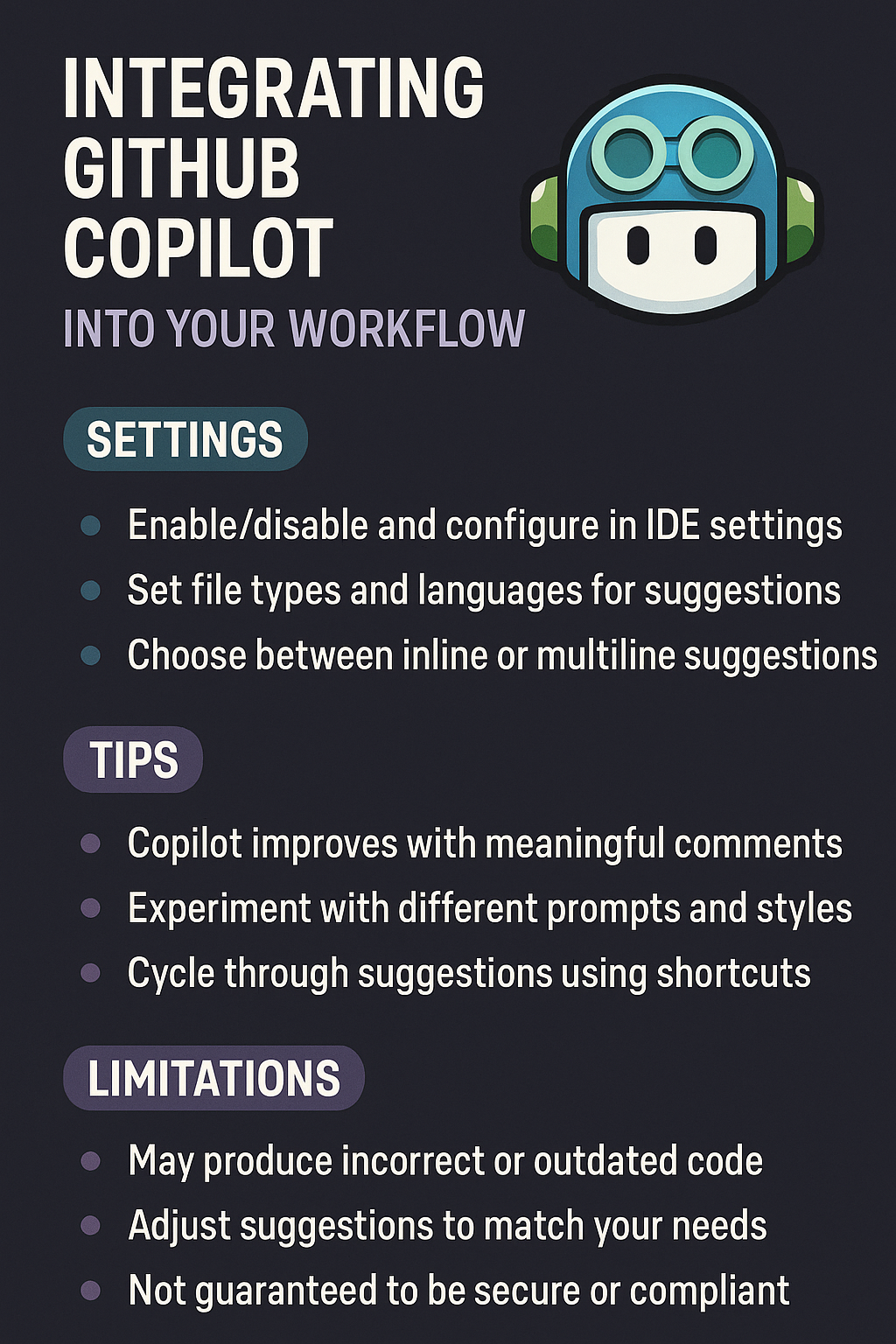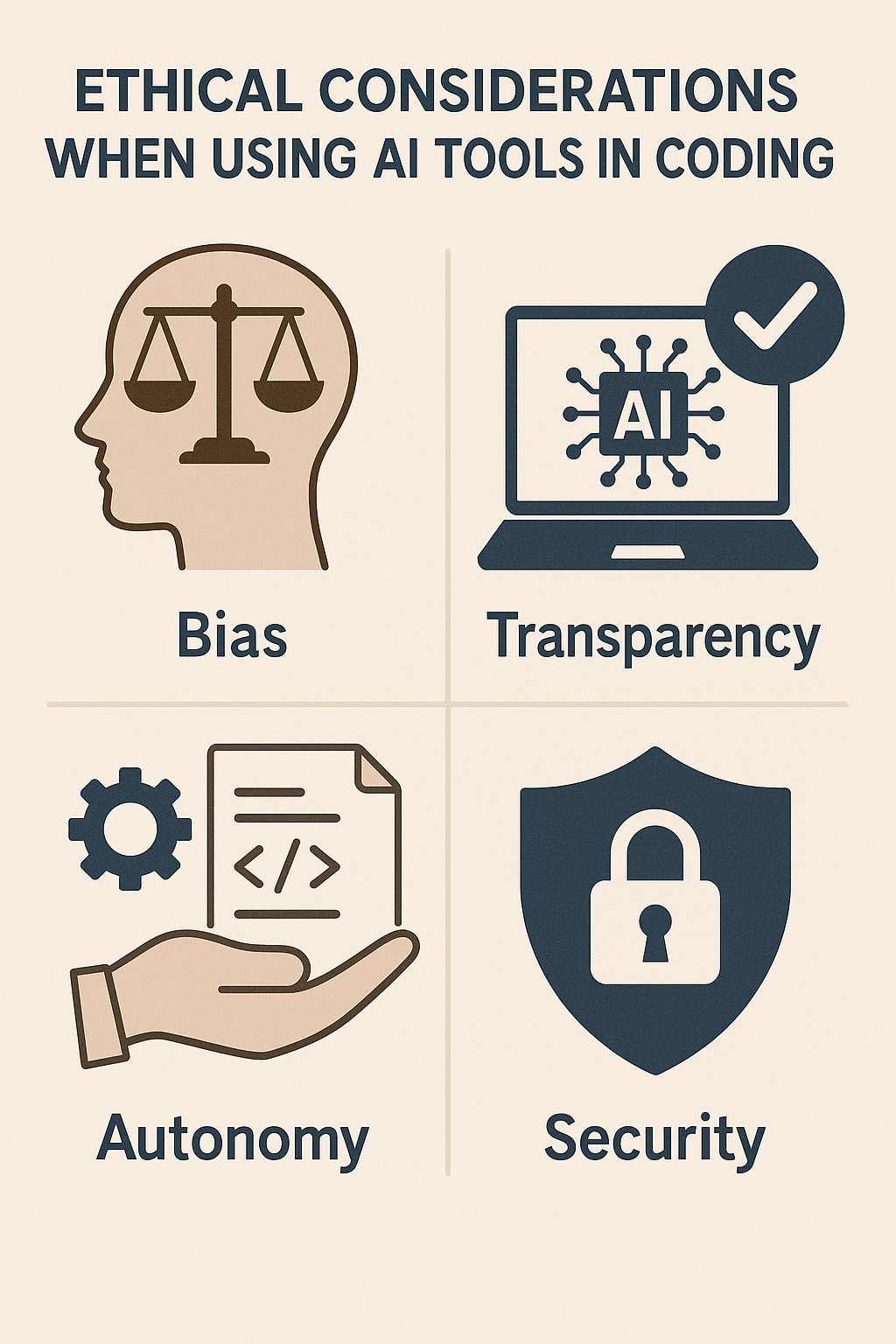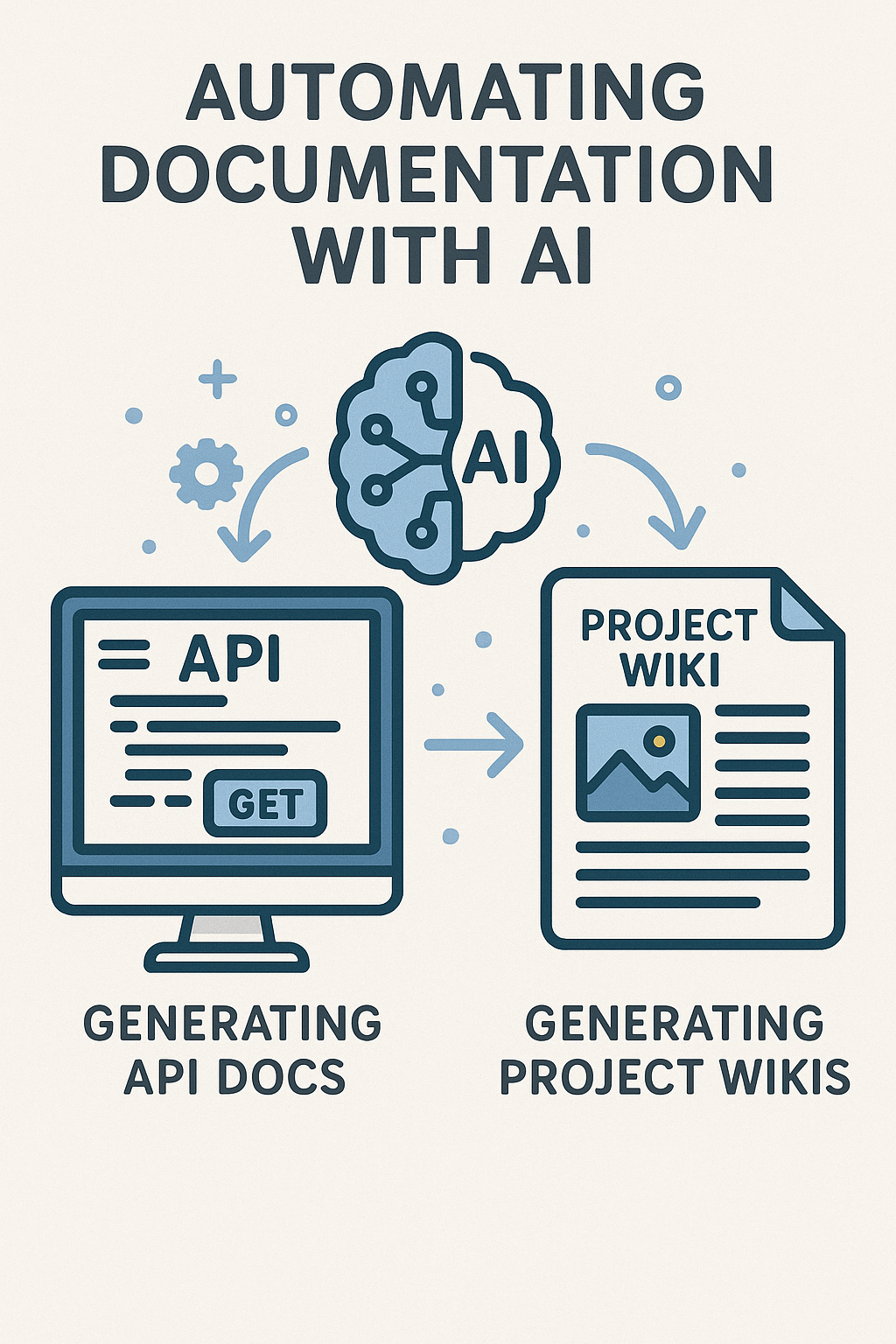
Introduction
GitHub Copilot has become one of the most popular AI coding assistants for developers. Powered by OpenAI’s Codex, it suggests code snippets, entire functions, and even helps with documentation.
But to get the most out of Copilot, you need to know how to configure it properly, when to trust its suggestions, and when to step in.
In this article, we’ll go through the best settings, practical tips, and important limitations you should be aware of when integrating GitHub Copilot into your workflow.
Getting Started with GitHub Copilot
To use Copilot, you’ll need:
- A GitHub account with a Copilot subscription
- A supported IDE like VS Code, JetBrains IDEs, or Neovim
- The GitHub Copilot extension installed and linked to your account
Once set up, Copilot will start suggesting completions in real time as you type.
Key Settings to Configure
Enable/Disable Inline Suggestions
You can control whether Copilot shows inline code completions or only suggestions in a side panel. This helps reduce distraction when you want fewer interruptions.
Language and Framework Support
Adjust settings to prioritize the languages you use most. For example, you can improve results for Python, JavaScript, or Dart projects.
Privacy and Telemetry
Review GitHub’s settings for sharing data and snippets. Some teams disable telemetry for compliance reasons.
Copilot Labs (Optional)
Copilot Labs offers experimental features like code explanation and test generation. Enabling it can provide extra learning opportunities.
Tips for Using Copilot Effectively
- Write clear comments: Copilot often generates better code if you describe your intent in a comment first.
- Use it for boilerplate: Let AI handle repetitive tasks like class constructors or test scaffolding.
- Iterate on suggestions: If the first suggestion isn’t great, press
Alt/Option + ]in VS Code to cycle through alternatives. - Keep coding standards in mind: Use Copilot to accelerate, but enforce formatting and linting with your existing tools.
- Pair it with reviews: Treat Copilot like a junior developer — helpful, but always in need of review.
Limitations to Watch Out For
While powerful, Copilot isn’t perfect. Here are some important limitations:
- Context limits: Copilot can’t see your whole project and may generate incomplete solutions.
- Security concerns: It may suggest insecure or outdated patterns if not reviewed.
- Business logic gaps: AI doesn’t understand your company’s unique rules or domain knowledge.
- Over-reliance risk: Using Copilot too much can discourage deeper problem-solving skills in the team.
Conclusion
Integrating GitHub Copilot into your workflow can boost productivity, reduce repetitive coding, and even help with learning new frameworks.
The key is to configure settings correctly, use it strategically for the right tasks, and remain aware of its limitations. Think of Copilot as an assistant, not a replacement.
If you’re exploring automation further, check out how to set up CI/CD pipelines with GitHub Actions, Firebase Hosting & Docker. For official guidance, you can also review GitHub Copilot documentation.

